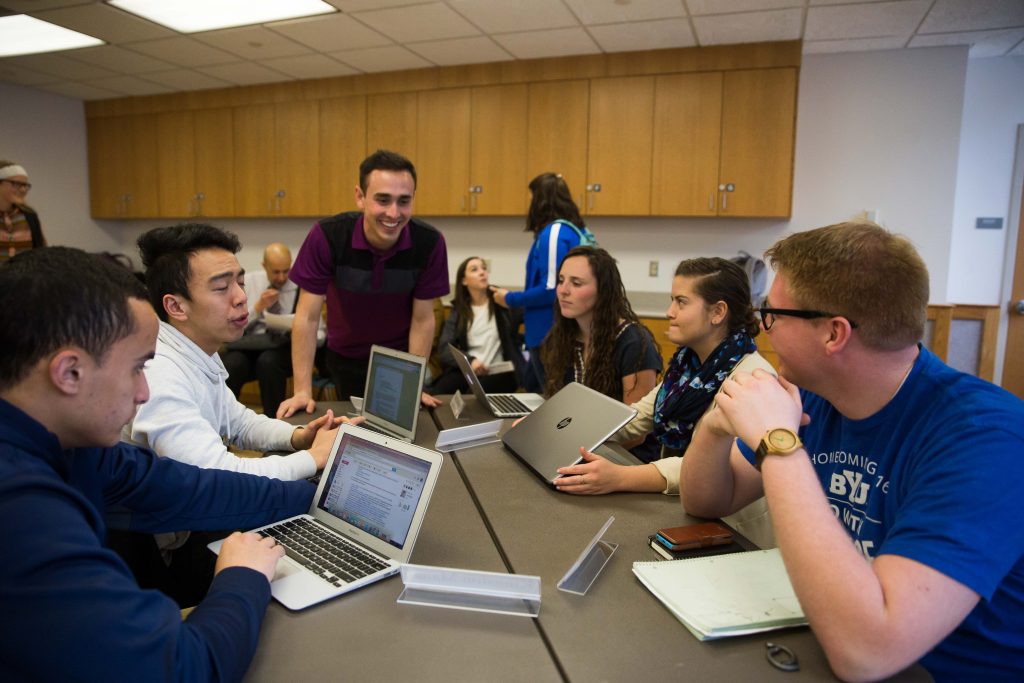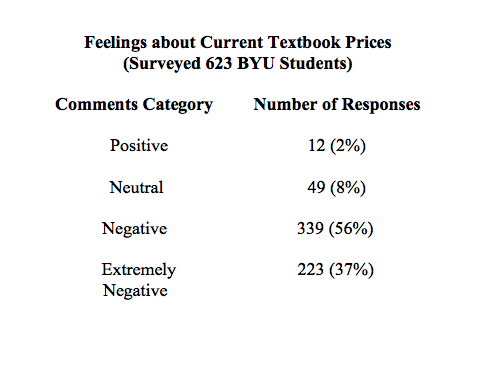
BYUSA’s Student Advisory Council teamed up with administration and professors to research resources that would cut textbook costs for students and make learning easier for the campus community.
The Student Advisory Council works with BYU administration to represent the voice and sentiments of the BYU student body. The council currently has a team conducting a research project about the impact and effectiveness of open educational resources on the price of textbooks for students.
Open educational resources are openly licensed documents and media which individuals can access online and in print. BYU mechanical engineering student Phillip Ng said these resources are freely accessible to both student and professors.
“Basically, if BYU professors could use (open educational resources) in a classroom setting, students wouldn’t need to buy textbooks, cutting costs for students and allowing professors the ability to branch out from a textbook,” Ng said. “Our purpose is to encourage professors to look into (open educational resources) and see if it is an option for them to use.”
A survey was conducted by the open educational resources project team for the Student Advisory Council in 2015. The survey asked 623 BYU juniors and seniors about their feelings on textbook prices.

The Student Advisory Council concluded the majority of the responses could only be categorized as negative or extremely negative. According to these comments, students felt textbook prices were unreasonably high.
Sara Buckley, a junior studying advertising and a member of the Student Advisory Council group researching open educational resources, said the survey results have been valuable.
“The results have helped us as we work on our project, knowing that the student body would support our efforts,” Buckley said. “Bringing affordable options to BYU is much harder than we thought. We’ve learned that it’s not a simple solution. We are aware that (open educational resources) resources aren’t possible for every course at BYU.”
Last August, three professors were given a grant by the Harold B. Lee Library to implement open educational resources into their curriculum. Psychological and developmental biology professor Jonathan Wisco, marketing communications professor Kurt Sandholtz and psychology professor Mikle South were selected.
These professors haven’t started using open educational resources in the classroom yet. However, the grant they received is currently helping them develop the curriculum they will use starting in Fall 2017, Sandholtz said.
Wisco said he likes open educational resources because professors can cut costs significantly for BYU students by using this program and creating free textbooks.
“Each professor is undergoing studies to understand how those in a classroom will benefit from OER,” Wisco said. “The results for these studies should be done by midsummer term here at BYU.”
Wisco said so far, the anecdotal evidence has indicated students have had at least the same positive learning experience using open educational resources as others have had using the more expensive option of buying traditional print textbooks.
South said he knew something needed to change in regards to textbooks he requires his students to purchase, so he got involved with open educational resources research.
“I’m very frustrated with textbooks, first of all by the cost of the textbooks, which makes me feel obligated to use them a lot,” South said.
South said he also doesn’t like textbooks because he feels most of them limit students’ learning.
“I feel my hands are tied to textbooks because I’m being told what I have to cover just because that is the way it has always been done,” South said. “With OER, I feel like I have a lot of flexibility. I can use the material as a foundation to help students understand what is now happening in the field.”
Open educational resources studies are taking place on campus for the next year, and it could be a while before BYU students and professors see real implementation of open educational resources in classrooms.




